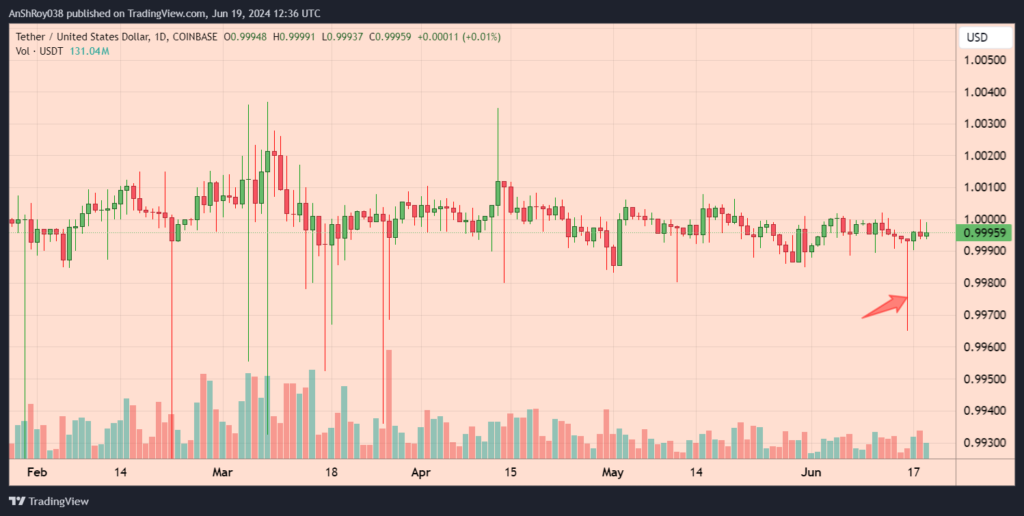NOIDA (CoinChapter.com)— Tether (USDT) has established itself as a key element in the cryptocurrency ecosystem, providing liquidity and stability in an otherwise volatile market. However, persistent questions regarding its reserve backing, transparency, and regulatory compliance overshadow USDT’s dominance.
The New York Attorney General’s investigation disclosed in June 2023 that the stablecoin issuer historically held significant amounts of commercial paper and securities issued by Chinese entities.
Concerns about its backing raise doubts about the project’s stability and the potential risks it poses to the broader crypto market.
Tether’s Holdings: Backing and Ownership Concerns
Consumers’ Research, a conservative nonprofit, has launched a significant campaign against Tether, alleging connections to criminal activities and foreign governments. The organization claims Tether has links to Chinese and Russian governments, terrorist outfits, and human trafficking operations.
There have been allegations that groups such as Hamas, Al Qaeda, and ISIS use Tether to evade US sanctions and finance illicit activities. Additionally, Tether’s refusal to undergo a full audit raises concerns about the true backing of its reserves, drawing parallels to the FTX collapse.
An analysis of Tether’s asset backing reveals a complex and opaque business structure. Tether has distributed its reserves across multiple financial institutions and investment vehicles, with substantial funds held in Bahamas-based Deltec Bank & Trust.

Yes, that Bahamas, the country that is known for its “honest” and “law-abiding” banking system! Well, the concentration of assets in the Bahamas raises questions about risk diversification and transparency.
Historical data indicates that Tether’s reserves have included commercial paper and securities issued by Chinese entities, such as China Construction Bank Corp. and the Industrial and Commercial Bank of China.
Despite Tether’s claims of divesting from Chinese assets, verification is challenging due to the absence of independent audits.
Tether’s heavy reliance on offshore banks and historical ties to China-based assets raises concerns about the stability and liquidity of its reserves. Regulatory bodies have flagged these issues, emphasizing the importance of transparency and compliance in maintaining market confidence.
Market Impact of Allegations Against Tether
If the allegations regarding Tether’s opaque reserve management and potential Chinese backing prove accurate, the implications for the cryptocurrency market could be substantial. The stablecoin issuer’s widespread use means any instability or loss of confidence could disrupt the market.
USDT’s role in providing liquidity means that any doubts about its stability could lead to sell-offs, affecting the prices of other cryptocurrencies and triggering a market-wide liquidity crisis.
Stricter oversight and potential sanctions against Tether could extend to other stablecoins, leading to tighter regulations and compliance requirements.

Moreover, past investigations by the CFTC and the Department of Justice into Tether’s backing and price manipulations highlight ongoing regulatory scrutiny.
The erosion of trust in USDT due to Chinese backing allegations could result in a shift to other stablecoins or fiat currencies, impacting trading volumes and the overall market dynamics. Investors may seek safer alternatives, which could lead to a revaluation of assets and increased volatility.
Given Tether’s integration into numerous crypto exchanges and DeFi platforms, any significant issues with its backing could pose systemic risks to the entire crypto ecosystem.
The post Is Tether Stablecoin Really Funded by The Chinese? appeared first on CoinChapter.



